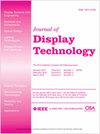Dysprosium-Doped Strontium Magnesium Silicate White Light Emitting Phosphor Prepared by Solid State Reaction Method
Q Engineering
引用次数: 6
Abstract
In this paper, we report the dysprosium-doped strontium magnesium silicate, namely, SrMgSi 2 O 6 :xDy 3+ (x = 1.0, 1.5, 2.0, 2.5, and 3.0 mol%) phosphors prepared by the traditional high temperature solid state reaction method. The prepared phosphors were characterized by X-ray diffraction, field emission scanning electron microscope coupled with the energy dispersive X-ray spectroscopy (EDS) and Fourier transform infrared technique. The crystal structures of sintered phosphors were an akermanite type which belongs to the tetragonal crystallography with space group P4̅2 1 m. The chemical composition of the sintered phosphor SrMgSi 2 O 6 :Dy 3+ (2%) was confirmed by the EDS. Under the ultraviolet excitation, the emission spectra of SrMgSi 2 O 6 :xDy 3+ (x = 1.0, 1.5, 2.0, 2.5, and 3.0 mol%) phosphors were composed of broadband with the characteristic emission of Dy 3+ ions peaking at 475 nm (blue) and 574 nm (yellow), originating from the transitions of 4 F 9/2 → 6 H j state (where j = 15/2 and 13/2). The combination of these two emissions constituted white light emission as indicated on the Commission Internationale de l'Eclairage chromaticity diagram. The possible mechanism of the prepared white light emitting SrMgSi 2 O 6 :xDy 3+ (x = 1.0, 1.5, 2.0, 2.5, and 3.0 mol%) phosphors were also investigated. Investigation on decay property show that the prepared phosphor held fast and slow decay process. In order to investigate the suitability of the samples as white color light sources for industrial uses, correlated color temperature (CCT) and color rendering index (CRI) were calculated. Values of CCT and CRI were found, well within the defined acceptable range.固态反应法制备掺镝硅酸锶镁白光发光粉
在本文中,我们报道了通过传统的高温固态反应方法制备的掺镝锶镁硅酸盐,即SrMgSi2O6:xDy3+(x=1.0、1.5、2.0、2.5和3.0mol%)磷光体。利用X射线衍射、场发射扫描电子显微镜、能谱仪和傅立叶变换红外光谱对制备的荧光粉进行了表征。烧结磷光体的晶体结构是属于四方晶体学的钙铝石型,空间群为P4 \ 21m。EDS证实了烧结磷光体SrMgSi2O6:Dy3+(2%)的化学组成。在紫外激发下,SrMgSi2O6:xDy3+(x=1.0、1.5、2.0、2.5和3.0mol%)荧光粉的发射光谱由宽带组成,Dy3+离子的特征发射峰值在475 nm(蓝色)和574 nm(黄色),源自4F9/2的跃迁→ 6Hj状态(其中j=15/2和13/2)。如国际照明委员会色度图所示,这两种发射的组合构成白光发射。还研究了所制备的白光发射SrMgSi2O6:xDy3+(x=1.0、1.5、2.0、2.5和3.0mol%)磷光体的可能机制。对其衰变特性的研究表明,所制备的荧光粉具有快速和慢速的衰变过程。为了研究样品作为工业用白色光源的适用性,计算了相关色温(CCT)和显色指数(CRI)。CCT和CRI的值均在规定的可接受范围内。
本文章由计算机程序翻译,如有差异,请以英文原文为准。
求助全文
约1分钟内获得全文
求助全文
来源期刊

Journal of Display Technology
工程技术-工程:电子与电气
CiteScore
1.50
自引率
0.00%
发文量
0
审稿时长
2.8 months
期刊介绍:
This publication covers the theory, material, design, fabrication, manufacturing and application of information displays and aspects of display technology that emphasize the progress in device engineering, design and simulation, materials, electronics, physics, and reliability aspects of displays and the application of displays. The Journal is sponsored by EDS, seven other IEEE societies (BT, CES, CPMT, IA, IM, PHO and SSC) and the Optical Society of America (OSA).
 求助内容:
求助内容: 应助结果提醒方式:
应助结果提醒方式:


